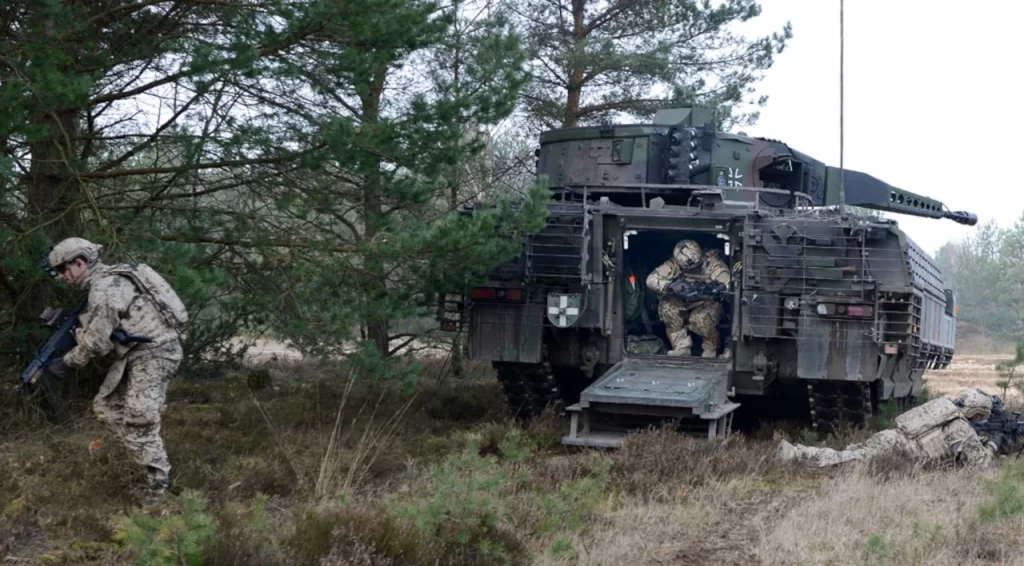Significant technical difficulties were encountered by the German Armed Forces while practising with Puma infantry fighting vehicles (IFVs), which will be made available to the NATO Rapid Response Force within the following calendar year. On Saturday, this information was published in Der Spiegel. The article cited a letter written by the commander of the 10th Panzer Division, Major General Ruprecht von Butler, to the Army’s leadership and the German Ministry of Defense.
During the eight-day exercise, the operational readiness of 18 Puma infantry fighting vehicles deteriorated to the point where they were completely unusable, which Major von Butler described as a “total failure.” The training was carried out in the facility that is designated for the armoured forces. The letter reportedly incensed the German Ministry of Defense because the problems involved weapons that would be used in the North Atlantic Alliance’s Rapid Response Forces commencing in the next year.
The two Puma infantry fighting vehicles (IFVs) left in service were also declared unworkable. The letter goes on to say that although the military was aware of the nature of the flaws, problems had never transpired with such frequency before. In addition, the IFVs were not subjected to an excessive load because they were transported to the firing ranges in the lowlands of northern Germany.

Claims that the German Armed Forces are unable to carry out defence-related duties were denied by German Chancellor Olaf Scholz in an interview that was published earlier on Saturday by the Süddeutsche Zeitung. He emphasised that, in contrast to the thirty years that have just passed, the country’s armed forces are once again capable of repelling an attack on the territory of Germany or any of its allies. A moment ago, the chancellor admitted that an insufficient supply of ammunition for the armed forces had put them in a dangerous position.
Previously, Steffen Hebestreit, the official spokesman of the German government, said that the German Armed Forces needed sufficient ammunition. As a result, the authorities strengthened their attempts to purchase it from the defence sector. The Bundestag Defense Commissioner Eva Hogl stated on the 20th of November that for Germany to effectively equip its armed forces, the country must make purchases of ammunition totalling 20 billion euros.
The PUMA offers its crew very adequate modular protection against mines, antitank weapon fire, and IEDs with its substantially shielded crew compartment that can accommodate up to 3+6 personnel, respectively. It can be transported using the A400m transport aircraft (protection level A), and it is nimble even while traversing rugged terrain. Because of its crewless, remotely-operable turret equipped with a 30mm automatic cannon, coaxial secondary armament, and the MELLS weapon system, the Puma has the hunter-killer ability.
The makers of the PUMA claim that it can keep its command capabilities in networked operations despite having to operate in extreme weather conditions and with inadequate infrastructure. This is made possible by the use of interfaces for the command and information system, the ally/enemy target acquisition system, and the Infantryman of the Future (IdZ) system.
The German Future Infantryman (idZ) system is currently being developed by EADS for the German Army and is one of the more advanced soldier modernisation systems. The technology provides the soldier with an up-to-date tactical picture, enables covert and silent communications, and provides navigational help.
The Puma is designed to replace an ageing German Marder 1 IFV, which has been in service for more than 30 years but is still in demand by other poorer NATO countries.
